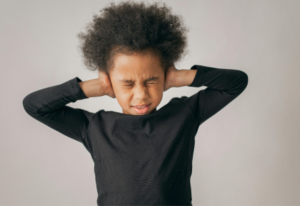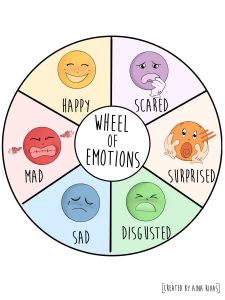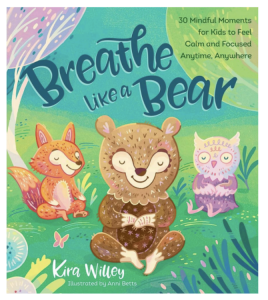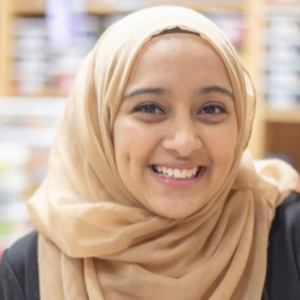Written by: Faiza Ali and Olivia Bonello

Anxious feelings are normal
It is normal for children to have anxious feelings. Children can feel worried or have fears at different stages in their life and these worries or fears can be constantly changing as children grow and develop. Anxious feelings in children can be triggered by many different situations. Going to a new school, daycare, starting school, moving to a new house, being without your caregivers, being in a new environment or being around new people can all cause feelings of anxiety within children.
Signs of anxious feelings within children
As a parent or caregiver, it may be difficult to identify anxious feelings within children. A way to identify anxiety is through signs and behavioural changes that your child may display. At different developmental stages, not all signs of anxiety may be noticeable or obvious.
Anxious feeling within children could look like:
- Worrying or crying more than other children around their age
- Tantrums with or without triggers
- Children saying they don’t feel well in certain situations or environments
- Children having trouble sleeping or finding it hard to relax
- Children having trouble focusing
- Children refusing to going to different environments
- Children refusing to eat or saying they are not hungry
- Shaking movements
- Getting upset or angry easily
- Constantly using the bathroom
Talking to your child about these feelings
Being able to talk to your children about feelings is essential and can be introduced as young as infancy. You also want to create a safe and comfortable environment for your child to be able to come to you and express these thoughts, feelings and emotions.
You can help younger children identify and learn the names of the emotions that they are expressing in various situations. “It sounds like this activity is making you angry”, “Oh that made me sad, are you also feeling sad?” “Wow this is so exciting! Are you so happy?”. Being able to identify simple emotions such as mad, sad, happy, scared can help label basic emotions and allows parents to eventually introduce more intricate feelings such as concerned, embarrassed, relieved, eager, etc.

For older children, ensure your child knows that they have a safe place to share their new or different feelings. When talking to your child about anxious feelings, find a calm moment to bring up the topic. Share how being anxious can feel, being anxious can be a feeling of discomfort, fear or worry; these kinds of words could be a good start on explaining anxiety to a young child. Next, share the physical response our bodies can have when we feel anxious: we can start to feel warm or sweaty, hearts can feel like they are beating faster or we might even feel butterflies in our stomachs. Make room for discussion and actively listening to what your child has to say. It may be a good start to ask when these emotions or feelings occur or if there is something that triggers them. Once you find out the reasons your child feels anxious you can begin to create a coping plan and provide comfort. Validate your child and share how it is normal to have these kinds of feelings. Everyone feels anxious from time to time, grown-ups too! Although they don’t feel good, having strategies in our tool box can help calm us down and work through these feelings.
Strategies and ways to cope
Finding strategies to cope with anxiety is very important not only for children but adults as well.
Some strategies for children:
- The 3 3 3 rule: Ask your child to name 3 things they can see, move 3 different parts of their body and focus on 3 things they can hear. Doing this allows your child to ground themselves and be present in the moment that they are in. This strategy also distracts the brain from spiralling and makes the mind focus on something new.
- Practise big deep breaths: Deep breathing is an essential tool to calm down the nervous system. Rather than asking a child to breathe while they are mid tantrum/ trigger, it’s best for caregivers to sit in front of their child and model deep breathing. A good way to practise deep breaths is to breathe in like you are smelling a flower and breathe out like you are blowing out birthday candles.
- Fidget toys: Some kids are movers. It is difficult to stay still and especially if their feelings of anxiety make them antsy. Fidget tools can be a great way to help children calm down and find something to focus on. Toys like this include, but are not limited to: pop-its, stress balls, eye-spy cards, fidget spinners
- Structure: For feelings like separation anxiety, stick to routine! Keep transitions short and build trust by sharing with your child when you will be back and sticking to that time.

A great book to support children through anxious feelings is Breathe like a Bear by Kira Willey. The book has 30 mindful moments that help children calm down and many different breathing strategies that can support children through anxious moments.
Would you like more support?
Connect with Faiza, our Child Life Specialist

Click here to learn more!
About Faiza:
The development of humans from birth, to childhood, to adolescence is an ever-changing journey. While these years can be filled with play, laughter and learning, life can throw curveballs and create challenging circumstances which require developmentally appropriate explanation, support and empowerment.
That’s where I come in!
My name is Faiza and I am a certified child life specialist! What’s that you ask? Child life specialists are healthcare professionals who work with infants, children, teens and families in various capacities. Using a family-centered framework, we provide therapeutic play, procedural preparation, and education to reduce fear, anxiety and pain. In the hospital, I can be seen helping children cope with blood work and vaccines, explaining a new diagnosis, connecting siblings during hospitalization, and providing memory making activities during end-of life.
I completed my undergraduate program in Early Childhood Studies at the University of Guelph-Humber. I also have a masters in Child Life and Paediatric Psychosocial Care from McMasterU. Since then, I got my certification, started working at Sick Kids and supported the Michael Garron Paediatric Vaccine clinic. When I’m not at work, you’ll find me and my toddler playing with pop-its, bubbles and chasing one another at the park!
My passion is to bring child life into the community to provide your child with a safe and empowering space. Child life at the WOMB can look like (but not limited to):
My passion stems from learning more about families and providing support during their unique journey. This can look like (but is not limited to):
- Preparing a sibling for a new baby in the house or in the NICU
- Providing support for needle fear and anxiety
- Developmentally appropriate explanation of new diagnosis
- Memory making and celebration of life activities
- Learning about attachment strategies to promote bonding
- End of life support
- Grief and loss support for loved ones.
References/ resources
NHS. (2024, January 23). Anxiety disorders in children. NHS inform. Retrieved February 18, 2024, from https://www.nhsinform.scot/illnesses-and-conditions/mental-health/anxiety-disorders-in-children/
CDC. (2023, July 25). Anxiety and Depression in Children | CDC. Centers for Disease Control and Prevention. Retrieved February 18, 2024, from https://www.cdc.gov/childrensmentalhealth/depression.html





